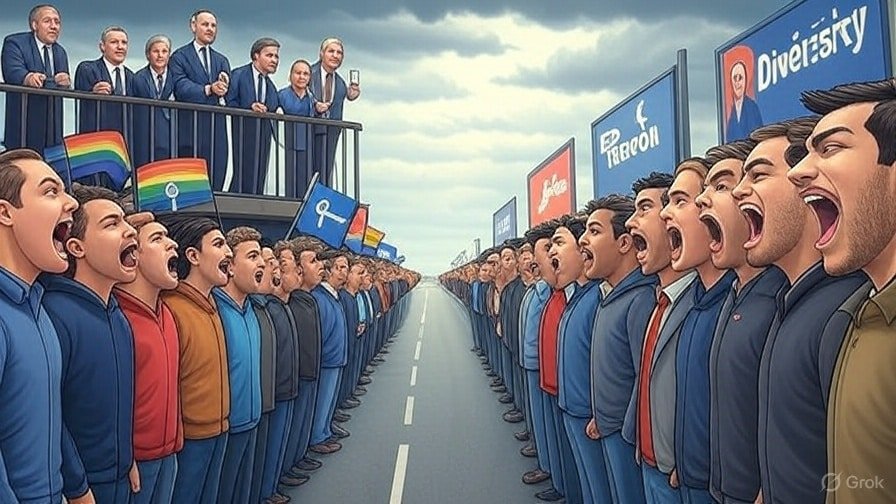Culture Wars – Divide, Distract, Conquer
Every headline screams of a new battle: over flags, statues, bathrooms, books, or words. These culture wars dominate politics and media, painting society as locked in endless conflict.
But here’s the cynical truth: culture wars aren’t about solving problems — they’re about distraction. They divide people into tribes, distract from economic inequality, and let elites keep control while the public fights over symbols.
They look like grassroots rage. In reality, they’re the perfect political tool: divide, distract, conquer.
Table of contents
What Are Culture Wars?
Culture wars are political battles fought over identity, values, and symbols instead of material issues like wages or housing. They include debates about race, gender, sexuality, immigration, religion, and “national identity.”
They are designed to be polarising: everyone must pick a side, and nuance disappears. The outrage keeps media ratings high, politicians relevant, and corporations safe.
How Did Culture Wars Take Over?
The roots go back decades, but culture wars exploded in the 1990s and 2000s as politics shifted from class-based struggles to identity debates. Social media then poured petrol on the fire — every outrage went viral, every side amplified their grievances.
At the same time, corporations realised they could play both sides. By sponsoring causes or campaigns, they could look moral without addressing inequality. It turned into free branding opportunities.
Who Benefits From Culture Wars?
The winners are always the same:
- Politicians – who rally voters with emotional wedge issues while avoiding hard reforms.
- Corporations – who rebrand themselves with slogans and virtue campaigns while keeping profits safe.
- Media – who thrive on clicks, views, and endless outrage.
And the losers? Ordinary people, left fighting each other over cultural scraps while struggling with rent, bills, and job security.
Culture Wars as a Weapon
Culture wars are not accidents — they’re strategies. When a government can’t (or won’t) fix inequality, it shifts the debate to identity. When corporations are criticised for exploitation, they release a diversity campaign. The aim isn’t unity; it’s distraction.
It’s like a magician’s trick: wave one hand with symbols and slogans while the other hand quietly pockets the wealth.
Why They Matter Today
Culture wars feel endless because they are meant to be endless. There’s always a new controversy, a new symbol to fight over. The cycle keeps society divided and distracted, while power stays concentrated at the top.
The real danger isn’t that people care about identity issues — discrimination is real. The danger is that these debates are used to smother class struggle and economic reform.
Buzzwords of Culture Wars
Like every modern conflict, culture wars run on slogans and catchphrases:
- “Polarisation” – the framing of every issue as two extremes, no middle ground allowed.
- “Wedge issue” – a symbolic fight designed to split voters and rile emotions.
- “Values voters” – code for turning cultural preferences into political loyalty.
- “Identity politics” – group-based demands dressed as justice.
- “Outrage” – the currency of clicks, campaigns, and careers.
These buzzwords give the circus a language — short, emotional hooks that keep the fights loud and the real issues quiet.
Conclusion
Culture wars are the perfect political circus. They keep people angry, divided, and entertained while the serious business of wealth and power carries on in the background.
Next time you see a heated debate over a statue, a slogan, or a bathroom, ask yourself: who really benefits if this is all we talk about? Chances are, it’s not you.
FAQ Section
What are culture wars?
They are political conflicts over identity, values, and symbols — like race, gender, and immigration — instead of economic issues.
Why do culture wars exist?
They keep society divided and distracted. Politicians, corporations, and media benefit, while economic inequality goes unchallenged.
Who benefits from culture wars?
Mainly politicians, corporations, and media outlets. They gain power, profit, and attention while avoiding real reform.
Why are culture wars dangerous?
Because they push aside discussions about class and wealth, leaving inequality to deepen while people fight over cultural scraps.



